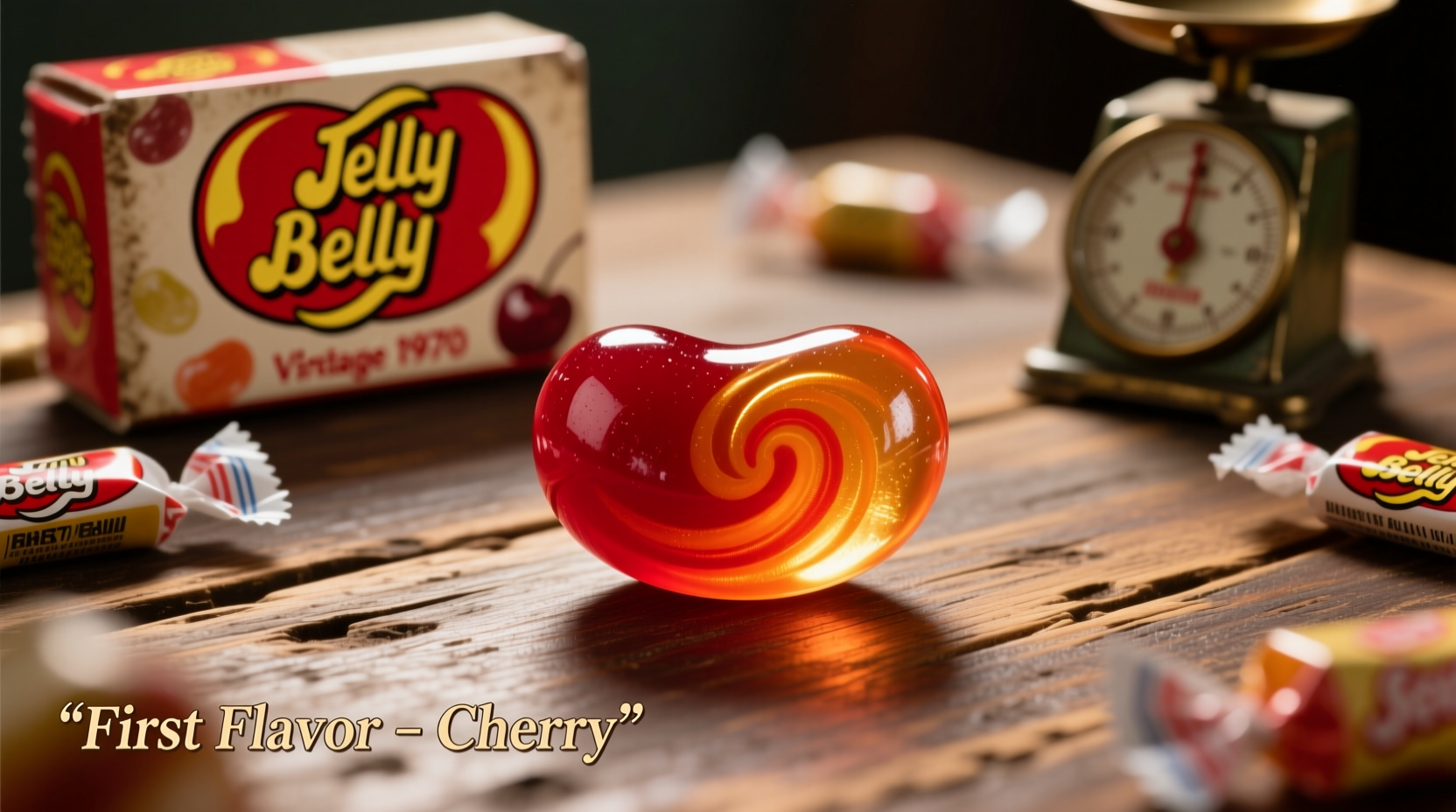The Sweet Beginning: How Cream Soda Became the Original Jelly Belly
When most people think of Jelly Belly's flavor history, they assume one of the fruit flavors like Very Cherry or Tangerine came first. But the surprising truth is that Cream Soda holds the distinction of being the very first flavor developed in the creation of what would become Jelly Belly jelly beans.
Back in 1976, the Goelitz Confectionery Company (founded in 1898) was experimenting with creating a superior jelly bean with more intense, true-to-life flavors and a smaller, more refined shape. Their breakthrough came with Cream Soda—the flavor that demonstrated their new manufacturing process could deliver authentic, complex taste experiences unlike traditional jelly beans.

Why Cream Soda Was the Perfect Starting Point
The confectioners chose Cream Soda for several strategic reasons:
- Technical feasibility - The flavor profile was achievable with their new manufacturing process
- Nostalgic appeal - Cream soda had widespread recognition across American demographics
- Flavor complexity - It demonstrated their ability to create layered, authentic tastes
- Market differentiation - No other jelly bean offered this sophisticated soda flavor
"Cream Soda was our proof of concept," explains David Klein, who later partnered with Goelitz to develop and market the Jelly Belly brand. "When we perfected that flavor with its distinctive vanilla-caramel notes and carbonation-like finish, we knew we had something special that could revolutionize the jelly bean category."
Jelly Belly Flavor Evolution Timeline
| Year | Milestone | Significance |
|---|---|---|
| 1976 | Cream Soda developed | First successful prototype of the new manufacturing process |
| 1977 | Original 8 flavors launched | Cream Soda joined by Very Cherry, Tangerine, Lemon, Green Apple, Grape, Licorice, and Root Beer |
| 1980 | Reagan administration adoption | President Reagan's love of Jelly Belly propelled the brand to national fame |
| 1983 | Company renamed Jelly Belly | Official rebranding to reflect their signature product |
| Today | 50+ flavors available | From classics to seasonal and limited editions |
Common Misconceptions About Jelly Belly's Origins
Despite the historical record, several misconceptions persist about Jelly Belly's first flavor:
| Misconception | Fact | Verification Source |
|---|---|---|
| Very Cherry was the first flavor | Cream Soda predates all fruit flavors | Jelly Belly official history |
| Jelly Belly was created in the 1980s | Development began in 1976, launched 1977 | San Francisco Chronicle historical feature |
| The brand started with 8 flavors | Cream Soda was perfected first, then expanded to 8 | Smithsonian Magazine |
From One Flavor to a Flavor Empire
After perfecting Cream Soda, the Goelitz team expanded to create seven additional flavors that would form the original Jelly Belly lineup: Very Cherry, Tangerine, Lemon, Green Apple, Grape, Licorice, and Root Beer. These eight flavors launched officially in 1977 under the "Jelly Belly" name.
The company's commitment to authentic flavor profiles set them apart. While traditional jelly beans used generic "fruit" flavors, Jelly Belly focused on specific, recognizable tastes—like distinguishing between Tangerine and Orange, or creating a Root Beer that actually tasted like the beverage rather than just wintergreen.
President Ronald Reagan's well-documented love of Jelly Belly beans (he kept a jar on the Oval Office desk) propelled the brand to national fame in the early 1980s, leading to the company's official name change to Jelly Belly Candy Company in 1983.
Why This History Matters Today
Understanding that Cream Soda was the original Jelly Belly flavor isn't just a trivia fact—it reveals the strategic thinking behind one of America's most successful confectionery innovations. The creators didn't start with obvious fruit flavors but chose a sophisticated soda profile to demonstrate their technical capabilities.
This historical insight helps explain Jelly Belly's enduring appeal: their commitment to authentic, complex flavors began with that first Cream Soda bean and continues today with their extensive flavor lineup that includes everything from classic fruit profiles to gourmet options like Buttered Popcorn and Cappuccino.
What year was the first Jelly Belly flavor created?
The first Jelly Belly flavor, Cream Soda, was created in 1976 by the Goelitz Confectionery Company before the official Jelly Belly brand launched in 1977.
Why was Cream Soda chosen as the first Jelly Belly flavor?
Cream Soda was chosen because it demonstrated the new manufacturing process could create complex, authentic flavors. Its nostalgic appeal and technical feasibility made it the perfect proof of concept for the gourmet jelly bean revolution.
How many original Jelly Belly flavors were there?
After perfecting Cream Soda as the first flavor, the company expanded to create seven additional flavors, resulting in the original eight-flavor lineup that launched in 1977: Cream Soda, Very Cherry, Tangerine, Lemon, Green Apple, Grape, Licorice, and Root Beer.
Who created the first Jelly Belly beans?
The first Jelly Belly beans were developed by the Goelitz Confectionery Company (founded in 1898). David Klein later partnered with Goelitz to develop and market the Jelly Belly brand, with the official launch happening in 1977.
Is Cream Soda still available as a Jelly Belly flavor today?
Yes, Cream Soda remains one of the classic Jelly Belly flavors still produced today. It's part of their permanent lineup along with the other original seven flavors from 1977.











 浙公网安备
33010002000092号
浙公网安备
33010002000092号 浙B2-20120091-4
浙B2-20120091-4